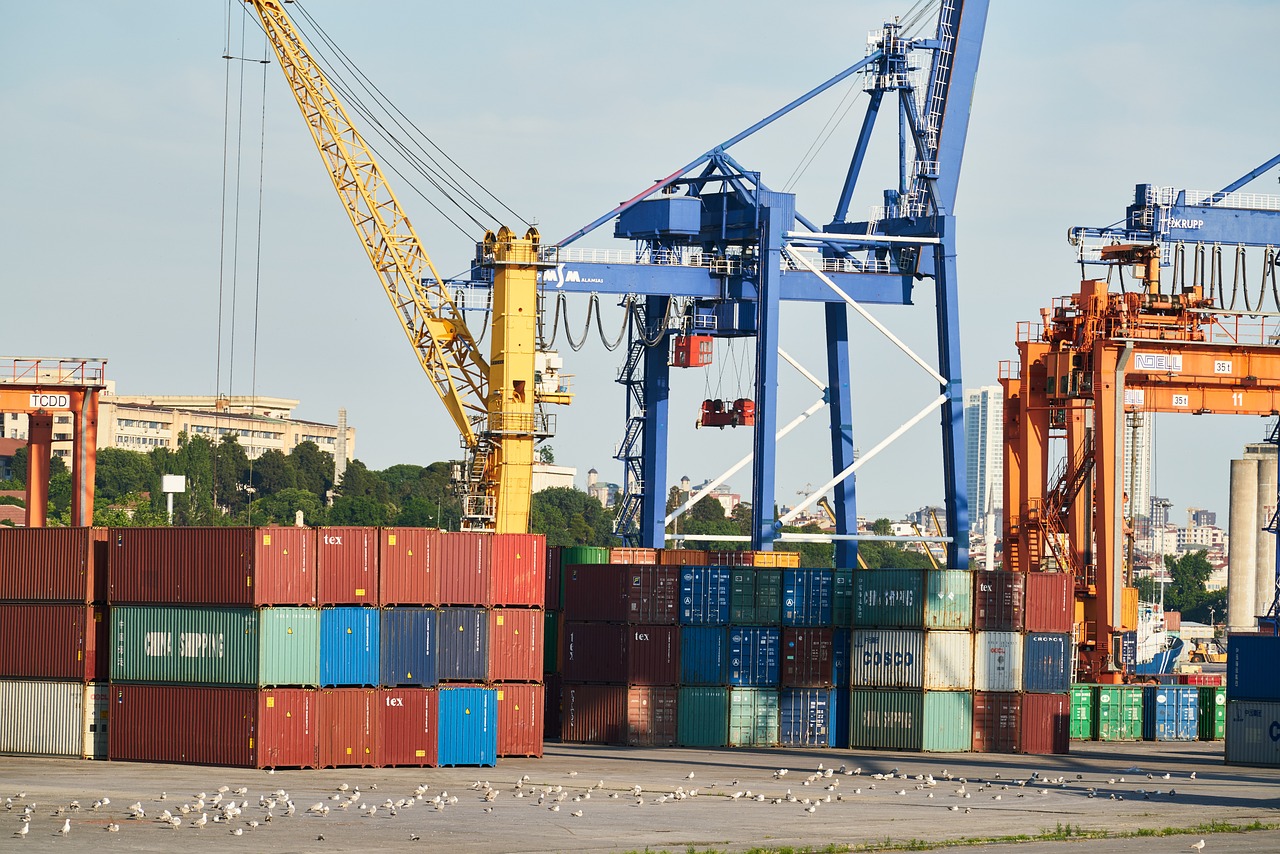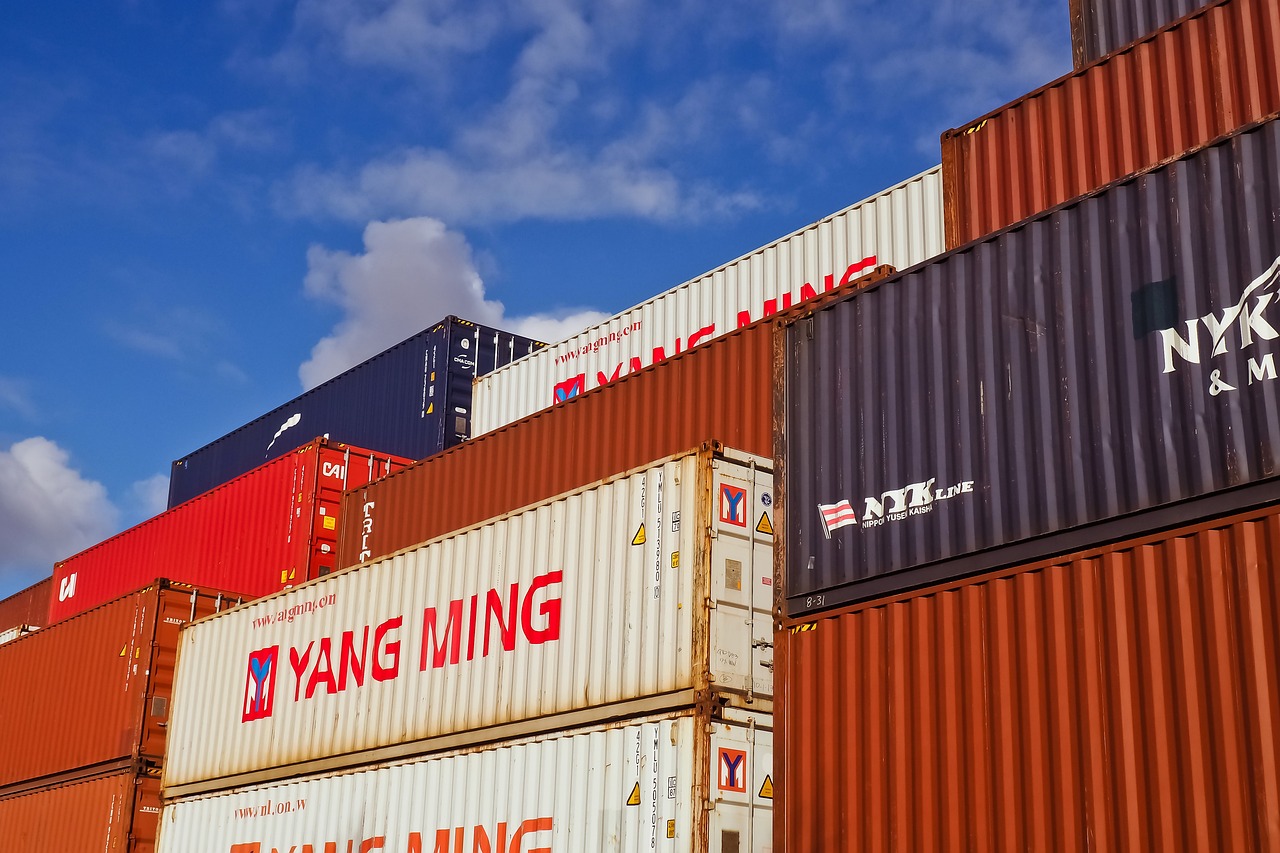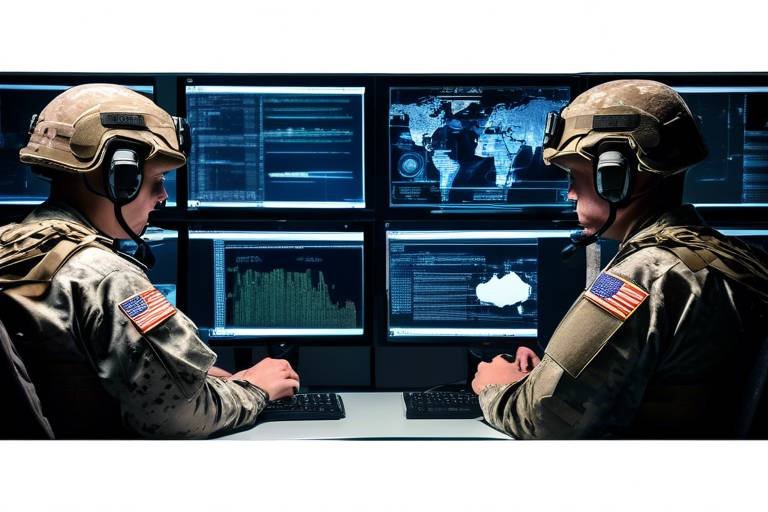How AI is Enhancing Battlefield Logistics Management
In the ever-evolving landscape of modern warfare, logistics has become a pivotal element in determining the success of military operations. The integration of artificial intelligence (AI) into battlefield logistics management is not just a trend; it’s a revolution that is reshaping how armed forces operate. Imagine a scenario where military planners can foresee supply needs before they arise, where resources are allocated with pinpoint accuracy, and where decisions are made in real-time based on data analytics. This is no longer a futuristic vision; it is happening right now.
AI enhances logistics management by streamlining processes, improving data analysis, and automating supply chain functions. Traditional methods of logistics often rely on static data and manual processes, which can lead to delays and inefficiencies. However, with AI, the military can leverage vast amounts of data to make informed decisions quickly. This capability not only speeds up operations but also ensures that troops are equipped with the necessary supplies at the right time and place, enhancing overall operational readiness.
One of the most significant advantages of AI in logistics is its ability to use predictive analytics. By analyzing historical data and current trends, AI can help military planners anticipate what resources will be needed in the future. This proactive approach means that supplies are preemptively dispatched, reducing the risk of shortages during critical operations. For example, if a certain unit is expected to move into a combat zone, AI can forecast their supply needs based on previous operations and current intelligence, ensuring that they are fully equipped when they arrive.
Moreover, AI systems can integrate real-time data from various sources, such as satellite imagery, weather patterns, and troop movements. This integration allows military leaders to make immediate adjustments to logistics plans based on current battlefield conditions. The ability to respond swiftly to changing circumstances is crucial for maintaining the upper hand in military engagements. Think of it as having a personal assistant who not only reminds you of your schedule but also adjusts it on the fly to ensure you make the most of every opportunity.
The impact of AI on supply chain efficiency cannot be overstated. By optimizing supply routes and managing inventory effectively, AI minimizes delays and reduces waste. This efficiency is vital in a battlefield scenario where every second counts. For instance, AI can analyze traffic patterns and potential obstacles to determine the fastest routes for supply convoys, ensuring that resources are delivered without unnecessary delays.
Furthermore, AI enhances communication networks among units. In a dynamic battlefield environment, effective communication is key to successful logistics management. AI facilitates better coordination and information sharing, allowing different units to work together seamlessly. Imagine a scenario where a unit in the field can instantly communicate its needs to a supply base, and the AI system can automatically prioritize and dispatch the required supplies. This level of coordination not only improves efficiency but also fosters a sense of unity among troops.
Another significant advancement brought by AI is automated inventory management. Traditional inventory systems often rely on manual tracking, which is prone to human error. AI-driven systems automate the tracking and replenishment processes, ensuring that supplies are always available when and where they are needed. This automation not only reduces the workload on personnel but also enhances accuracy, allowing military planners to focus on strategy rather than logistics.
- How does AI improve decision-making in logistics?
AI analyzes vast amounts of data to provide insights that inform quicker and more accurate decisions, enhancing overall operational effectiveness.
- What are the main challenges of implementing AI in military logistics?
Challenges include data security concerns, integration with existing legacy systems, and the need for personnel training to effectively utilize AI technologies.
- Can AI predict future supply needs?
Yes, using predictive analytics, AI can forecast future resource requirements based on historical data and current trends.
- Is AI capable of real-time adjustments in logistics plans?
Absolutely! AI systems can integrate real-time data from various sources, allowing for immediate adjustments based on current battlefield conditions.

The Role of AI in Logistics
Artificial intelligence is not just a buzzword; it's a game-changer in the realm of logistics, especially in military operations. Imagine having a digital assistant that can sift through mountains of data faster than any human could, making sense of it all to improve efficiency and effectiveness. That's precisely what AI brings to the table. By enhancing data analysis, forecasting demand, and automating supply chain processes, AI transforms the way military logistics are managed. This isn't just about speeding things up; it's about making smarter decisions that can save lives and resources on the battlefield.
One of the most significant impacts of AI in logistics is its ability to provide actionable insights from complex data sets. For example, AI algorithms can analyze past supply chain performance, weather conditions, and even enemy movements to predict future needs. This level of predictive analytics allows military planners to anticipate resource requirements more accurately. Imagine a scenario where soldiers are running low on essential supplies, but thanks to AI, a logistics officer can predict this need in advance and ensure the necessary items are dispatched in time. It's like having a crystal ball that helps you prepare for the unexpected.
Moreover, AI systems can integrate real-time data from various sources, which is crucial in a fast-paced battlefield environment. This integration enables immediate adjustments to logistics plans based on the current situation. For instance, if a supply route becomes compromised, AI can quickly reroute deliveries to ensure that troops still receive the necessary supplies without delay. This adaptability is vital in maintaining operational readiness and effectiveness.
Another area where AI shines is in optimizing supply chain efficiency. By analyzing data related to inventory levels, transportation routes, and delivery times, AI can identify the most efficient paths and methods for transporting goods. This not only reduces delays but also minimizes waste, ensuring that every resource is utilized effectively. Picture a well-oiled machine where every cog and wheel works in harmony—this is what AI aims to achieve in military logistics.
Furthermore, AI enhances communication networks among military units, which is essential for effective logistics management. In a dynamic battlefield environment, the ability to share information quickly and accurately can make all the difference. AI facilitates better coordination and information sharing, ensuring that everyone is on the same page. This level of communication can be the difference between success and failure in critical operations.
In summary, the role of AI in logistics is multifaceted and transformative. From improving data analysis and forecasting to enhancing communication and optimizing supply chain efficiency, AI is paving the way for more effective military operations. As we continue to explore the capabilities of AI, the potential for revolutionizing logistics management becomes increasingly clear.
- What are the primary benefits of using AI in logistics? AI improves efficiency, enhances decision-making, and optimizes resource allocation, making logistics operations faster and more accurate.
- How does AI help in predictive analytics? AI analyzes historical data and current conditions to forecast future resource needs, allowing for timely supply deliveries.
- What challenges does AI face in military logistics? Challenges include data security concerns, integration with legacy systems, and the need for personnel training.
- Can AI improve communication in military logistics? Yes, AI enhances communication networks, facilitating better coordination and information sharing among units.

Predictive Analytics for Resource Allocation
In the fast-paced world of military operations, the ability to anticipate needs is not just a luxury—it's a necessity. Predictive analytics powered by artificial intelligence is stepping up to the plate, enabling military planners to make informed decisions about resource allocation like never before. Imagine being able to predict the exact amount of supplies needed for a mission before it even begins; that's the power of AI at work. With sophisticated algorithms analyzing historical data, current conditions, and various influencing factors, military leaders can effectively forecast demand and ensure that troops are equipped with the necessary resources to maintain operational readiness.
This predictive capability is not merely about crunching numbers; it's about enhancing the effectiveness and efficiency of military operations. For example, AI can analyze patterns in supply usage, identify trends in troop movements, and even account for environmental factors that could affect logistics. By doing so, it enables a proactive approach to resource management. Instead of waiting for a supply shortage to occur, military planners can anticipate the demand and adjust their logistics strategies accordingly. This proactive stance can mean the difference between mission success and failure, especially in high-stakes situations where every second counts.
Moreover, the integration of predictive analytics into logistics allows for a more dynamic approach to resource allocation. For instance, if a particular unit is deployed to an area with unexpected challenges, AI can quickly reassess and redirect supplies from other units that may have surplus resources. This level of agility ensures that troops are always prepared, no matter the circumstances. To illustrate this, consider the following table that highlights the benefits of predictive analytics in resource allocation:
| Benefit | Description |
|---|---|
| Enhanced Readiness | Ensures troops have the right supplies at the right time, improving operational effectiveness. |
| Cost Efficiency | Reduces waste by optimizing supply chains and preventing overstocking or shortages. |
| Informed Decision-Making | Provides data-driven insights that support strategic planning and execution. |
| Agility | Allows for real-time adjustments to logistics plans based on current battlefield conditions. |
However, the journey towards fully leveraging predictive analytics is not without its challenges. Data accuracy is paramount; if the data fed into AI systems is flawed, the predictions will be unreliable. Therefore, maintaining high-quality data is essential for the success of these systems. Additionally, military organizations must invest in training personnel to understand and utilize these advanced technologies effectively. As with any innovative approach, the successful implementation of predictive analytics in resource allocation hinges on a combination of technology, data integrity, and human expertise.
- What is predictive analytics in military logistics?
Predictive analytics in military logistics refers to the use of AI-driven algorithms to forecast resource needs and optimize supply chain management based on historical data and current conditions. - How does AI improve resource allocation?
AI improves resource allocation by analyzing data to predict demand, allowing military planners to proactively manage supplies and ensure that troops are adequately equipped. - What are the challenges of implementing predictive analytics?
Key challenges include ensuring data accuracy, integrating new technologies with legacy systems, and training personnel to effectively use AI tools.

Real-Time Data Integration
In the ever-evolving landscape of military operations, has emerged as a game-changer. Imagine being in the thick of a battlefield where conditions can change in the blink of an eye. The ability to access and analyze data from various sources in real-time allows military planners to make swift and informed decisions. This capability is akin to having a bird's-eye view of the entire battlefield, where every movement is tracked, and every decision is backed by the latest information.
AI systems are designed to gather data from multiple sources, including satellite imagery, drone feeds, and ground sensors. This integration ensures that logistics teams are not operating with outdated or incomplete information. For instance, if a unit encounters unexpected resistance or if weather conditions change, AI can quickly adjust logistics plans to reroute supplies or allocate resources differently. This level of responsiveness is crucial; it can mean the difference between success and failure in military operations.
Consider a scenario where a battalion is running low on ammunition during a critical engagement. With real-time data integration, the logistics command can instantly assess the situation and determine the nearest supply depot with available stock. They can then coordinate an expedited delivery, ensuring that troops receive the necessary supplies without delay. This not only enhances operational readiness but also boosts the morale of the troops who know that support is just a moment away.
Furthermore, the integration of real-time data fosters better communication among various military units. When all units operate on the same data platform, they can share updates and insights seamlessly. This level of collaboration is essential in dynamic environments where every second counts. For example, if one unit reports an ambush, other units can immediately adjust their logistics to avoid that area or send reinforcements. The synergy created by real-time data integration is vital for maintaining a tactical advantage on the battlefield.
To illustrate the impact of real-time data integration, consider the following table that outlines key benefits:
| Benefit | Description |
|---|---|
| Improved Decision-Making | Access to current data allows for faster and more accurate decisions. |
| Enhanced Responsiveness | Logistics plans can be adjusted immediately based on real-time conditions. |
| Increased Coordination | Better communication among units leads to more effective logistics management. |
| Operational Efficiency | Reduces delays and optimizes resource allocation on the battlefield. |
In conclusion, the significance of real-time data integration in military logistics cannot be overstated. As we move forward into an era where technology plays an increasingly pivotal role in warfare, embracing these advancements will be essential. The ability to react swiftly and effectively to changing conditions is not just an operational advantage; it is a necessity for survival and success on the modern battlefield.
- What is real-time data integration?
Real-time data integration refers to the process of combining data from various sources as it is generated, allowing for immediate analysis and action. - How does AI improve decision-making in military logistics?
AI enhances decision-making by providing accurate, up-to-date information that helps military planners respond quickly to changing battlefield conditions. - What are the challenges of implementing real-time data integration?
Challenges include ensuring data security, managing integration with existing systems, and training personnel to effectively use these technologies.

Impact on Supply Chain Efficiency
The impact of artificial intelligence on supply chain efficiency in military logistics is nothing short of revolutionary. Imagine a battlefield where every resource, from ammunition to medical supplies, is delivered precisely when and where it is needed. With AI, this is becoming a reality. By analyzing vast amounts of data, AI algorithms can identify the most efficient routes for supply deliveries, taking into account factors such as terrain, weather conditions, and enemy movements. This ensures that resources reach their destinations faster, reducing the risk of shortages that can jeopardize missions.
Moreover, AI enhances inventory management by predicting usage patterns and adjusting stock levels accordingly. For instance, if a particular unit is engaged in heavy combat, AI can forecast an increase in supply needs based on historical data and real-time analytics. This proactive approach minimizes delays and prevents waste, as supplies are not overstocked or understocked. In essence, AI acts as a smart assistant, helping military planners make informed decisions that optimize resource allocation.
To illustrate the efficiency gains achieved through AI, consider the following table that compares traditional supply chain methods with AI-enhanced logistics:
| Aspect | Traditional Logistics | AI-Enhanced Logistics |
|---|---|---|
| Response Time | Hours to Days | Minutes to Hours |
| Resource Utilization | Moderate | High |
| Forecast Accuracy | Low to Moderate | High |
| Cost Efficiency | Higher Costs | Reduced Costs |
As we can see, AI significantly enhances response times and resource utilization while improving forecast accuracy and reducing costs. This transformation leads to a more agile military operation, where logistics can adapt to changing conditions on the ground swiftly. Additionally, AI can help identify potential bottlenecks in the supply chain before they become critical issues, enabling military planners to take corrective actions in advance.
Furthermore, AI's ability to analyze data in real-time means that supply chain decisions can be made on the fly, considering the latest intelligence and battlefield developments. This level of adaptability is crucial in modern warfare, where the landscape can shift dramatically in a matter of hours. By ensuring that supplies are delivered efficiently and effectively, AI not only enhances operational readiness but also contributes to the overall success of military missions.
- How does AI improve supply chain efficiency in military logistics? AI analyzes data to optimize routes, predict supply needs, and enhance inventory management, ensuring timely delivery of resources.
- What are the challenges of implementing AI in military logistics? Challenges include data security, integration with legacy systems, and the need for personnel training.
- Can AI predict future supply needs accurately? Yes, AI uses historical data and real-time analytics to forecast supply requirements with high accuracy.
- How does AI enhance communication networks in logistics? AI facilitates better coordination and information sharing among units, improving logistics management in dynamic environments.

Enhancing Communication Networks
This article explores the transformative role of artificial intelligence in optimizing logistics on the battlefield, focusing on efficiency, resource allocation, and decision-making processes that enhance military operations.
Artificial intelligence is revolutionizing logistics by improving data analysis, forecasting demand, and automating supply chain processes, leading to faster and more accurate decision-making in military operations.
Predictive analytics powered by AI helps military planners anticipate resource needs, ensuring that troops receive necessary supplies in a timely manner, ultimately enhancing operational readiness and effectiveness.
AI systems can integrate real-time data from various sources, allowing for immediate adjustments in logistics plans based on current battlefield conditions, thereby improving responsiveness and adaptability.
By optimizing supply chain routes and inventory management, AI significantly reduces delays and waste, ensuring that resources are utilized efficiently and effectively during military operations.
In the fast-paced world of military operations, effective communication is the backbone of success. AI plays a pivotal role in among various units, enabling seamless coordination and information sharing. Imagine a battlefield where every unit is connected, sharing real-time updates and tactical information effortlessly. This is not just a dream; it's becoming a reality thanks to AI.
AI technologies can analyze communication patterns and optimize the flow of information, ensuring that critical messages reach the right people at the right time. For instance, during a complex operation, AI can prioritize communications based on urgency and relevance, allowing commanders to make informed decisions swiftly. This capability is crucial in dynamic environments where conditions can change in an instant.
Moreover, AI can facilitate interoperability among different branches of the military, allowing for a unified approach to logistics management. With AI-driven platforms, units can communicate across various systems, reducing the chances of miscommunication and enhancing overall operational efficiency. This interconnectedness is vital, especially in joint operations where coordination between air, land, and sea forces is essential.
To illustrate the impact of AI on communication networks, consider the following table that outlines key benefits:
| Benefit | Description |
|---|---|
| Real-time Updates | AI enables instant sharing of battlefield information, improving situational awareness. |
| Enhanced Coordination | Facilitates better teamwork among units, leading to more effective logistics operations. |
| Reduced Errors | Minimizes miscommunication through automated systems that prioritize information. |
| Increased Efficiency | Streamlines communication processes, allowing for quicker decision-making. |
In conclusion, AI's ability to enhance communication networks significantly impacts battlefield logistics management. By ensuring that every unit is informed and connected, AI not only improves operational efficiency but also increases the chances of mission success. It's like having a well-oiled machine where each cog works in perfect harmony, all thanks to the power of artificial intelligence.
Despite its advantages, implementing AI in battlefield logistics presents challenges, including data security, integration with existing systems, and the need for personnel training to effectively utilize these technologies.
With increased reliance on AI comes the risk of cyber threats; safeguarding sensitive military logistics data is paramount to maintaining operational integrity and security.
Integrating AI solutions with legacy logistics systems can be complex and costly, requiring strategic planning and investment to ensure seamless functionality and performance.
- What are the main advantages of using AI in battlefield logistics?
AI enhances efficiency, improves decision-making, and ensures timely resource allocation, which is critical for operational success.
- How does AI improve communication on the battlefield?
AI optimizes information flow, prioritizes urgent communications, and facilitates interoperability among different military units.
- What challenges are associated with implementing AI in military logistics?
Challenges include data security risks, integration with existing systems, and the need for personnel training.

Automated Inventory Management
In the fast-paced world of military logistics, is nothing short of a game-changer. Imagine a system that can track every piece of equipment, every supply, and every resource needed on the battlefield, all in real-time. This is precisely what AI-driven inventory management systems offer. By utilizing cutting-edge technology, these systems automate the tracking and replenishment processes, ensuring that supplies are always available when and where they are needed. This not only minimizes human error but also significantly enhances the overall efficiency of military operations.
Consider this: when troops are deployed in challenging environments, the last thing they need is to worry about running out of essential supplies. Automated systems can predict when stocks are low and trigger replenishment orders without human intervention. This predictive capability is crucial, especially in situations where every second counts. For instance, if a unit is engaged in a prolonged operation, the automated system can analyze usage patterns and forecast when additional ammunition or medical supplies will be required, thus ensuring that no soldier goes without the necessary resources.
Moreover, the integration of AI in inventory management allows for a centralized view of all supplies across various units. This visibility is vital for effective decision-making. Commanders can quickly assess what is available, what is needed, and where it is located, facilitating swift responses to changing battlefield conditions. Imagine being able to see the entire supply chain at a glance, making it easier to allocate resources efficiently and avoid unnecessary delays.
| Benefits of Automated Inventory Management | Description |
|---|---|
| Real-Time Tracking | Ensures accurate visibility of supplies, preventing shortages. |
| Reduced Human Error | Automation minimizes the chances of mistakes in inventory counts. |
| Cost Efficiency | Optimizes resource allocation, reducing waste and unnecessary spending. |
| Enhanced Responsiveness | Allows for quick adjustments based on real-time data and needs. |
However, the transition to automated inventory management is not without its challenges. One of the primary hurdles is ensuring that all personnel are adequately trained to use these advanced systems. While the technology itself can be incredibly sophisticated, its effectiveness ultimately relies on the users' ability to operate it efficiently. Therefore, military organizations must invest in comprehensive training programs to equip their personnel with the necessary skills to leverage AI-driven tools effectively.
In conclusion, automated inventory management represents a significant leap forward in military logistics. By harnessing the power of AI, military operations can achieve unprecedented levels of efficiency and effectiveness. As we continue to embrace these technologies, the future of battlefield logistics looks promising, paving the way for better resource management and ultimately, enhanced operational success.
- What is automated inventory management?
Automated inventory management refers to the use of technology, particularly AI, to track and manage supplies in real-time, ensuring that resources are always available when needed. - How does AI improve inventory management?
AI enhances inventory management by predicting resource needs, automating tracking processes, and providing real-time data, which minimizes human error and improves efficiency. - What are the challenges of implementing AI in inventory management?
Challenges include the need for personnel training, integration with existing systems, and addressing data security concerns. - Why is real-time tracking important?
Real-time tracking is crucial as it provides immediate visibility of supplies, helping to prevent shortages and ensuring that troops have what they need at all times.

Challenges of Implementing AI
While the advantages of integrating artificial intelligence into battlefield logistics are compelling, the journey is not without its bumps. One of the most significant challenges is data security. As military operations increasingly rely on AI for logistics management, the sensitivity of the data being processed cannot be overstated. Cyber threats are evolving, and with them, the potential for compromising vital information. Imagine the chaos that could ensue if enemy forces gained access to troop movements or supply chain details. Therefore, safeguarding this data is paramount, requiring advanced encryption methods and constant vigilance.
Another hurdle is the integration of AI with legacy systems. Many military organizations have established logistics frameworks that have served them well over the years. However, these systems can be outdated and not designed to work with modern AI solutions. The process of merging the two can be complex and costly. It’s akin to trying to fit a square peg into a round hole; without careful planning and execution, the integration can lead to inefficiencies rather than enhancements. Organizations must invest time and resources into ensuring that the AI systems can communicate effectively with existing logistics platforms, which can be a daunting task.
Moreover, there's the critical aspect of personnel training. Implementing AI technologies requires a workforce that is not only familiar with the new systems but also skilled in leveraging their capabilities to the fullest. This means investing in comprehensive training programs to ensure that personnel can adapt to these advanced tools. Without proper training, even the most sophisticated AI systems can fall short of their potential, leading to frustration and resistance from staff who may feel overwhelmed by the changes.
In addition to these challenges, there are also concerns regarding cost implications. The initial investment required to implement AI technologies can be substantial. Organizations must weigh the long-term benefits against short-term financial constraints. However, it's essential to view this as a strategic investment rather than just an expense. The efficiency gains and enhanced operational capabilities that AI can bring to battlefield logistics often justify the upfront costs in the long run.
Lastly, the cultural shift within military organizations can pose a challenge. Embracing AI means shifting mindsets from traditional methods to innovative solutions. This cultural transition can meet resistance from personnel who are accustomed to established practices. Building a culture that embraces technology and innovation is crucial for the successful implementation of AI in logistics.
In summary, while AI holds incredible promise for enhancing battlefield logistics management, its implementation comes with a set of challenges that must be navigated carefully. From data security to personnel training, each aspect requires thoughtful consideration and strategic planning to harness the full potential of these transformative technologies.
- What are the main benefits of using AI in battlefield logistics? AI enhances efficiency, improves resource allocation, and facilitates real-time data integration, leading to more effective military operations.
- How does AI improve data security in logistics? AI can implement advanced encryption methods and monitor for cyber threats, safeguarding sensitive military logistics data.
- What training is required for personnel using AI systems? Comprehensive training programs are essential to ensure personnel can effectively utilize AI technologies and adapt to new systems.
- Are there cost implications associated with implementing AI? Yes, while there is an initial investment, the long-term efficiency gains often justify the costs.
- How can organizations overcome resistance to AI implementation? Fostering a culture that embraces technology and innovation can help ease the transition and encourage acceptance among personnel.

Data Security Concerns
As we delve into the amazing world of artificial intelligence (AI) in battlefield logistics, we can't overlook the shadowy side of this technological revolution: . With military operations becoming increasingly reliant on AI, the stakes are higher than ever. Imagine a scenario where sensitive logistics data falls into the wrong hands. The implications could be catastrophic, affecting not just operational efficiency but also national security. It’s like handing over the keys to a fortress; you wouldn’t do it lightly!
One of the primary challenges is the risk of cyber threats. As AI systems process vast amounts of data, they become attractive targets for cybercriminals and hostile entities. This data often includes troop movements, supply routes, and other sensitive information that, if compromised, could jeopardize missions and lives. Therefore, safeguarding this information is not just a precaution—it's a necessity. Military organizations must implement robust cybersecurity measures, including:
- Encryption: Ensuring that all data transmitted and stored is encrypted to prevent unauthorized access.
- Access Controls: Limiting access to sensitive data only to authorized personnel, thereby reducing the risk of internal breaches.
- Regular Audits: Conducting frequent security audits to identify and rectify vulnerabilities in the system.
Moreover, the complexity of AI systems can introduce additional vulnerabilities. AI algorithms are often seen as "black boxes," making it difficult to understand how decisions are made or how data is processed. This lack of transparency can hinder the ability to detect anomalies or potential breaches in real time. It's akin to driving a car without seeing the road ahead; you might be cruising smoothly until suddenly, you hit a bump!
Integrating AI into existing logistics frameworks also poses challenges. Many military organizations still rely on legacy systems that were not designed with modern cybersecurity threats in mind. This integration can create gaps in security, making it easier for adversaries to exploit weaknesses. Therefore, a strategic approach is vital to ensure that new AI solutions do not inadvertently compromise security.
Finally, personnel training is another crucial aspect of addressing data security concerns. Even the most advanced AI systems are only as effective as the people operating them. Military personnel must be trained not only in the technical aspects of these systems but also in understanding the importance of data security. This includes recognizing potential phishing attempts, understanding the significance of secure passwords, and being aware of the latest cybersecurity protocols.
In conclusion, while AI presents incredible opportunities for enhancing battlefield logistics, the associated data security concerns cannot be ignored. With the right measures in place—encryption, access controls, regular audits, and comprehensive training—military organizations can harness the power of AI while safeguarding their most sensitive information.
- What are the main data security risks associated with AI in military logistics?
The primary risks include cyber threats targeting sensitive data, vulnerabilities in AI systems, and challenges related to integrating new technology with legacy systems. - How can military organizations protect their logistics data?
Implementing encryption, access controls, conducting regular audits, and providing personnel training are crucial steps to enhance data security. - Why is personnel training important in AI implementation?
Personnel training ensures that military staff understand both the technical aspects of AI systems and the critical importance of data security, helping to prevent breaches.

Integration with Legacy Systems
This article explores the transformative role of artificial intelligence in optimizing logistics on the battlefield, focusing on efficiency, resource allocation, and decision-making processes that enhance military operations.
Artificial intelligence is revolutionizing logistics by improving data analysis, forecasting demand, and automating supply chain processes, leading to faster and more accurate decision-making in military operations.
Predictive analytics powered by AI helps military planners anticipate resource needs, ensuring that troops receive necessary supplies in a timely manner, ultimately enhancing operational readiness and effectiveness.
AI systems can integrate real-time data from various sources, allowing for immediate adjustments in logistics plans based on current battlefield conditions, thereby improving responsiveness and adaptability.
By optimizing supply chain routes and inventory management, AI significantly reduces delays and waste, ensuring that resources are utilized efficiently and effectively during military operations.
AI enhances communication networks among units, facilitating better coordination and information sharing, which is crucial for effective logistics management in dynamic battlefield environments.
AI-driven inventory management systems automate tracking and replenishment processes, minimizing human error and ensuring that supplies are always available when and where they are needed.
Despite its advantages, implementing AI in battlefield logistics presents challenges, including data security, integration with existing systems, and the need for personnel training to effectively utilize these technologies.
With increased reliance on AI comes the risk of cyber threats; safeguarding sensitive military logistics data is paramount to maintaining operational integrity and security.
Integrating AI solutions with legacy logistics systems is often a complex and daunting task. Many military organizations rely on established systems that have been in place for years, if not decades. These systems may not have been designed with modern technology in mind, making integration a challenging endeavor. The key to successful integration lies in understanding both the capabilities of AI and the limitations of existing systems.
To effectively merge AI with legacy systems, organizations must consider several factors:
- Compatibility: Ensuring that new AI technologies can communicate seamlessly with older systems is crucial. This may require custom interfaces or middleware solutions.
- Data Migration: Transferring data from legacy systems to AI-driven platforms can be time-consuming and fraught with potential data loss or corruption.
- Cost Implications: The financial investment required for integrating AI solutions can be significant, necessitating careful budgeting and resource allocation.
Moreover, organizations need to invest in training personnel who will operate these integrated systems. Without adequate training, the potential of AI can be underutilized, leading to frustration and inefficiency. A well-thought-out strategy that includes phased implementation, thorough testing, and ongoing support can help mitigate these challenges.
In summary, while integrating AI with legacy systems presents hurdles, the potential benefits in terms of enhanced efficiency and operational capability make it a worthwhile pursuit. With careful planning and execution, military organizations can harness the power of AI to transform their logistics operations.
- What is the main benefit of using AI in battlefield logistics? AI enhances decision-making speed and accuracy, leading to improved operational readiness.
- Are there risks associated with AI in military logistics? Yes, risks include data security concerns and the complexities of integrating with existing systems.
- How does predictive analytics improve resource allocation? It allows military planners to anticipate needs, ensuring timely delivery of supplies.
- What challenges do organizations face when integrating AI with legacy systems? Key challenges include compatibility issues, data migration difficulties, and cost implications.
Frequently Asked Questions
- How does AI improve logistics in military operations?
AI enhances military logistics by optimizing data analysis, automating supply chain processes, and improving forecasting. This leads to quicker, more informed decision-making, ensuring that resources are allocated efficiently and effectively.
- What is predictive analytics and how is it used in logistics?
Predictive analytics uses AI to analyze data and anticipate resource needs. In military logistics, this means that planners can foresee what supplies will be necessary and when, ensuring troops have what they need when they need it.
- Can AI adapt to changing battlefield conditions?
Absolutely! AI systems can integrate real-time data from various sources, allowing for immediate adjustments in logistics plans. This adaptability is crucial in dynamic environments where conditions can change rapidly.
- What are the benefits of automated inventory management?
Automated inventory management powered by AI minimizes human error and streamlines tracking and replenishment processes. This ensures that supplies are readily available, reducing the risk of shortages during critical operations.
- What challenges are associated with implementing AI in logistics?
While AI offers many advantages, challenges include data security risks, potential integration issues with existing legacy systems, and the need for training personnel to effectively use these advanced technologies.
- How important is data security in AI logistics?
Data security is paramount when implementing AI in military logistics. With increased reliance on technology, safeguarding sensitive information from cyber threats is crucial to maintaining operational integrity and security.
- What is the impact of AI on supply chain efficiency?
AI significantly improves supply chain efficiency by optimizing routes and inventory management. This reduces delays and waste, ensuring that resources are utilized in the most effective manner during military operations.
- How does AI enhance communication in logistics management?
AI enhances communication networks among military units, facilitating better coordination and information sharing. This is vital for effective logistics management, especially in fast-paced and unpredictable battlefield environments.



















